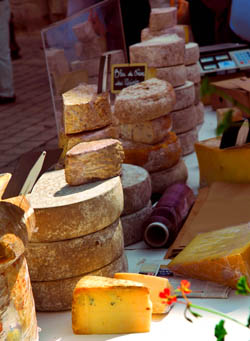 Cheese falls into four main categories, according to production techniques, and maturity:
Cheese falls into four main categories, according to production techniques, and maturity:
Soft, Unripened (cottage, ricotta, Neufchatel)
Soft, Ripened, Either Mold Ripened (blue vein, Brie), or Salt Cured (Feta)
Firm (Cheddar, Swiss)
Hard (Parmesan or Pecorino)
Some nutrients present in all classes of cheese include calcium, magnesium, zinc, selenium and folate. But what is more important is the quality of the cheese, not the type. The quality of the cheese directly relates to the quality, and the diet of the animal it originates from. For example, cheese from grass-fed cows is more than four times richer in CLA, a cancer fighting, fat reducing fat that has been widely studied for its health benefits.
A 1998 study found that CLA levels in French cheese range from 5.3 to 15.8 mg/g of fat. American cheese, originating from conventional dairies, contains half this amount. French dairies are more likely to raise their cows on pasture, which results in naturally high levels of CLA. Alpine cheese is extremely high in omega-3s, when it’s made from milk from cows grazing on northern latitude alpine grasses instead of feedlotting.
One last comment, if it says “cheese food” on the label, put the package down and step away from the counter.